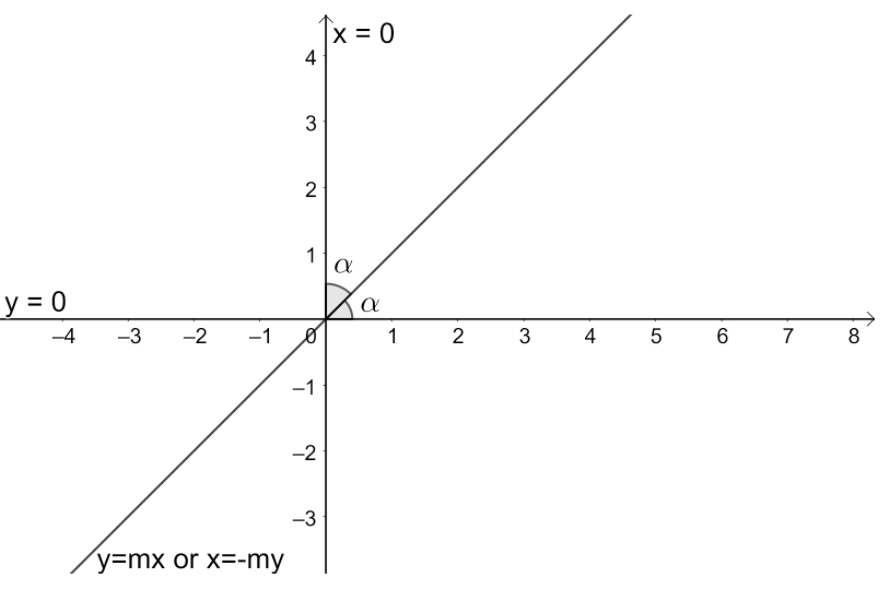Question
Question: If one of the lines of \(m{{y}^{2}}+\left( 1-{{m}^{2}} \right)xy-m{{x}^{2}}=0\) is a bisector of the...
If one of the lines of my2+(1−m2)xy−mx2=0 is a bisector of the angle between the line xy=0, then find the value of m?
(a) -2
(b) 1
(c) 2
(d) 2−1
Solution
We start solving the problem by finding the equation of lines present on the pairs of lines my2+(1−m2)xy−mx2=0 and xy=0. We then find the angle between the lines present in xy=0 and find the slope of the line required to bisect the lines present in xy=0. We then equate this slope with the slopes of the lines present in my2+(1−m2)xy−mx2=0 to get the required values of m.
Complete step-by-step solution
According to the problem, we are given that one of the lines of my2+(1−m2)xy−mx2=0 is a bisector of the angle between the line xy=0.
Let us first find the lines present in the pair of lines my2+(1−m2)xy−mx2=0.
So, we get my2+xy−m2xy−mx2=0.
⇒y(my+x)−mx(my+x)=0.
⇒(y−mx)(my+x)=0.
⇒y−mx=0 and my+x=0.
⇒y=mx and x=−my ---(1).
Now, let us find the lines present in the pair of lines xy=0.
So, we get x=0 and y=0. We know that this represents both axes and the angle between them is 90∘. In order to bisect both axes we need the lines that make 45∘ with both x and y axes (assuming that the line bisects both axes in the first quadrant only).
So, the slope of the line should be tan(45∘)=1.
Let us draw all the obtained information to get a better view.

Let us assume that the line y=mx is the bisector of lines x=0 and y=0. We know that the slope of the y=mx+c is m. So, we get the value of m as 1 i.e., m=1 ---(2).
Now, let us assume that the line x=−my is the bisector of lines x=0 and y=0.
So, we get y=m−1x.
We know that the slope of the y=mx+c is m.
So, we get the m−1=1.
⇒m=−1 ---(3).
From equations (2) and (3), we have found that the values for “m” are 1 and –1.
∴ The correct option for the given problem is (b).
Note: We should know that the line making 135∘ with x-axis will also bisect both x and y-axes but here we have taken an assumption that the angles lie in the first quadrant. Even if we take the slope of the line at the angle 135∘, we get the same values for “m”. We should not make calculation mistakes while solving this problem. Similarly, we can expect problems to find the equation of the line that makes a triangle of area b which is formed when the line bisects both axes.
